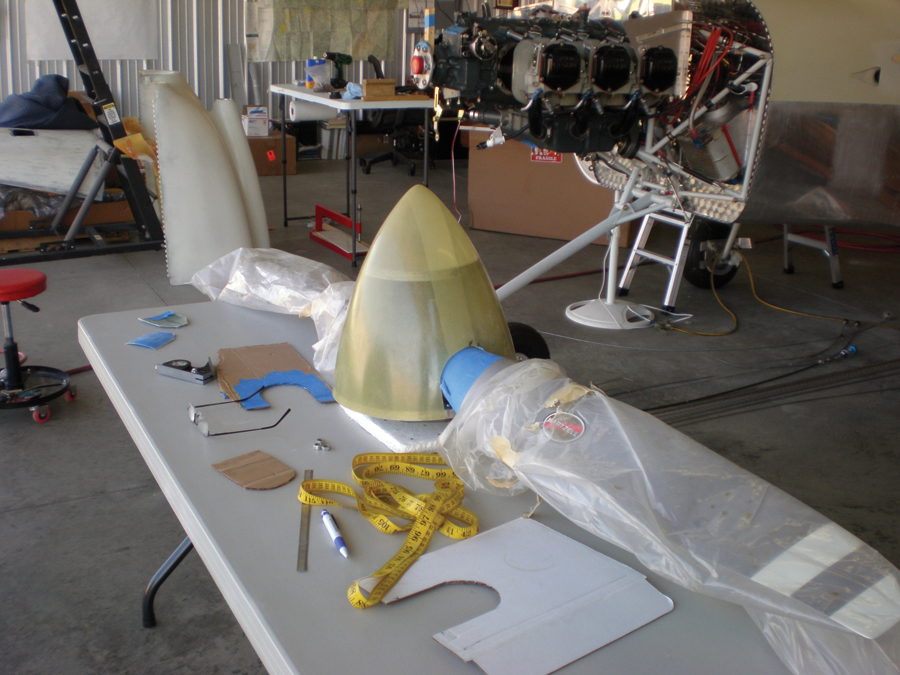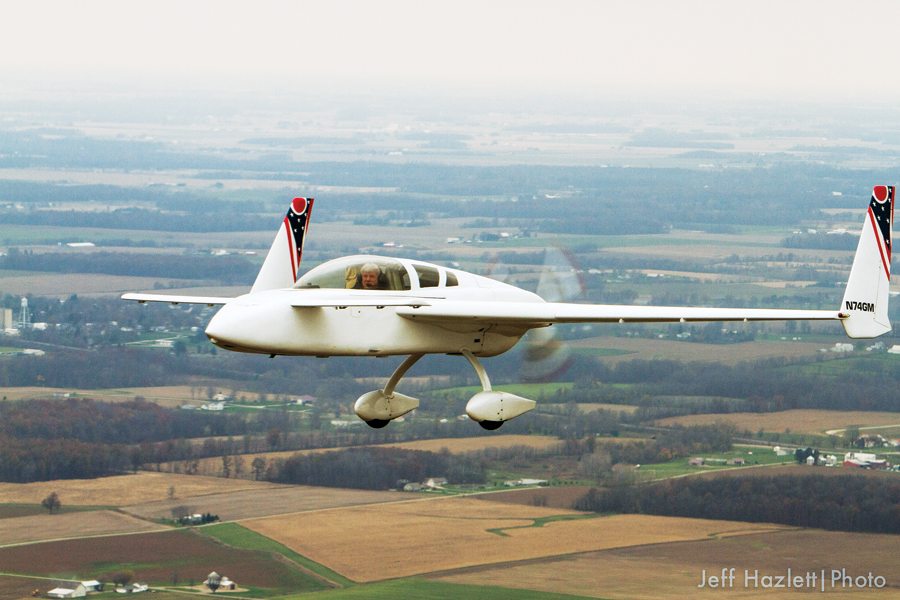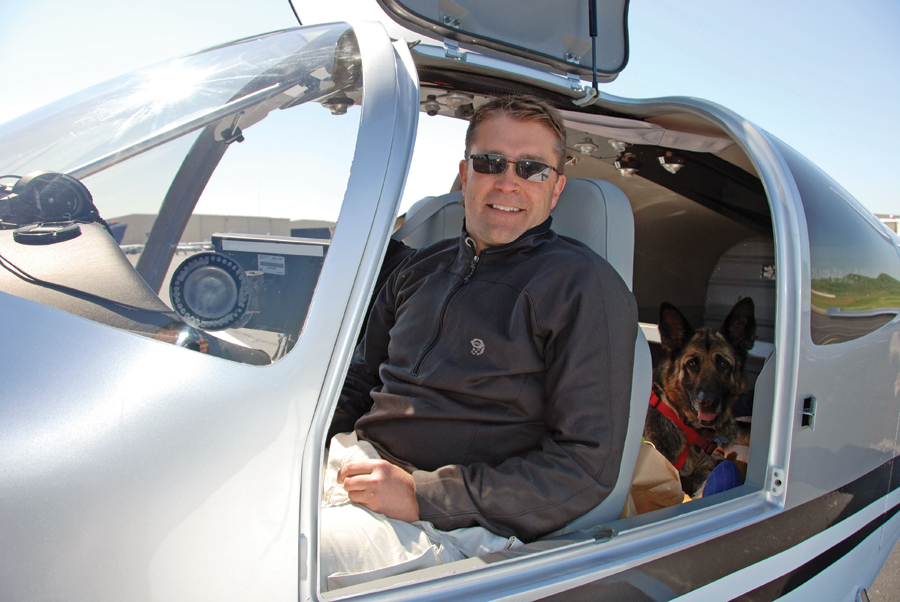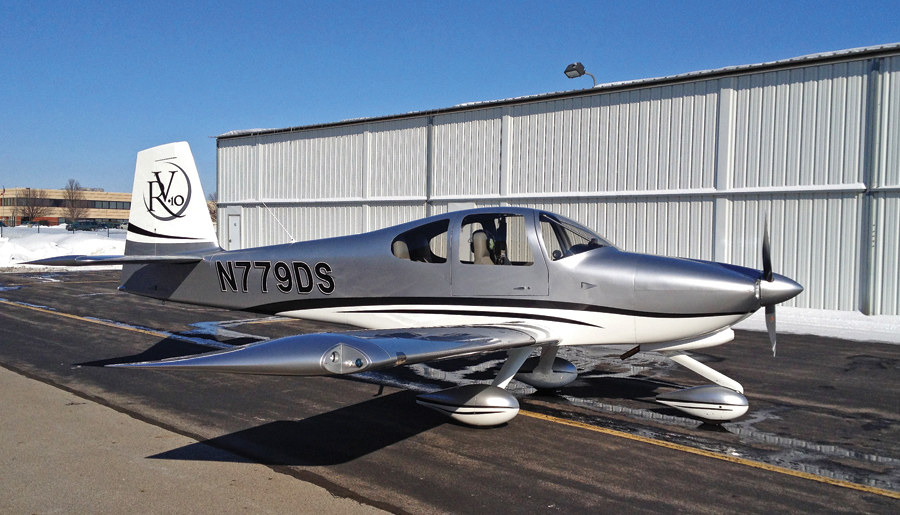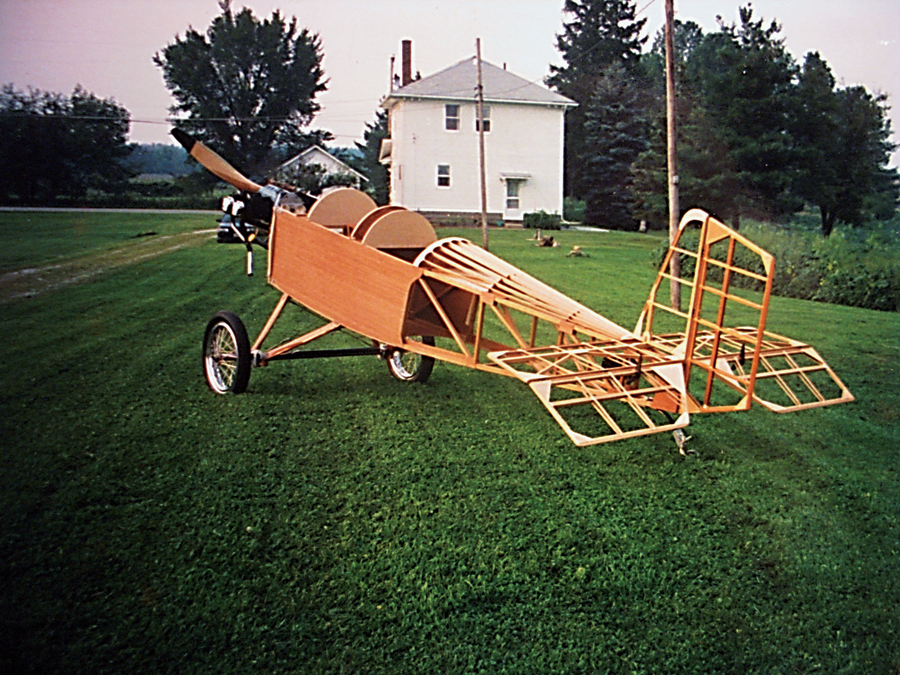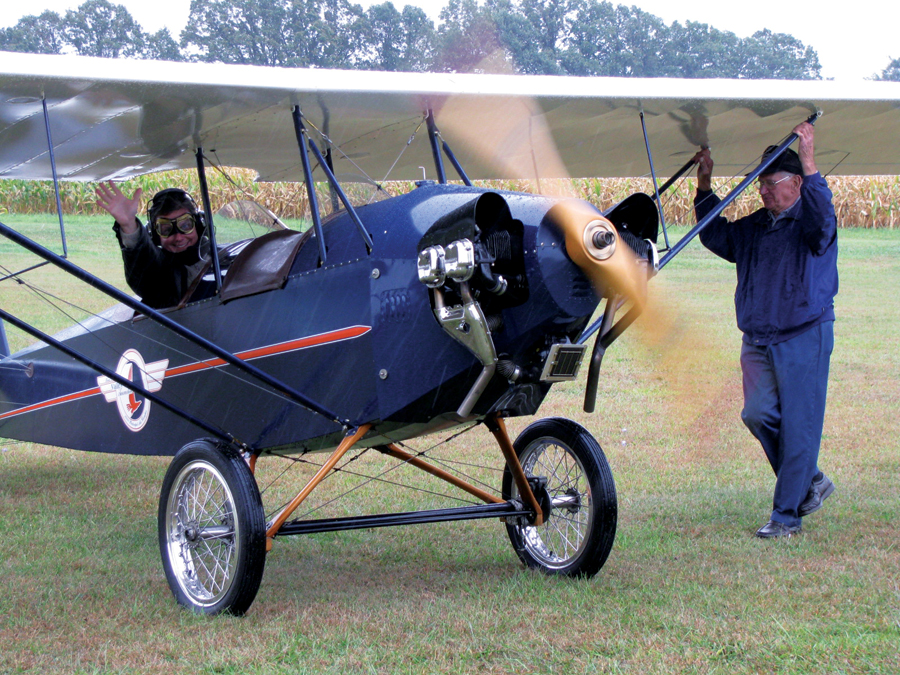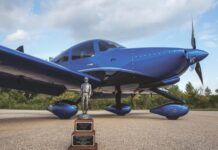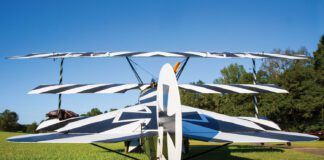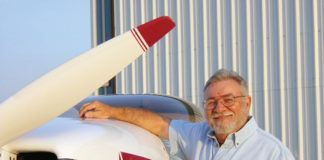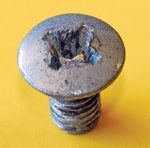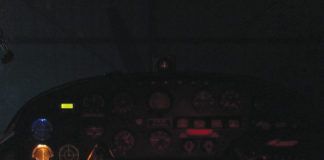It almost seems arrogant to think we can assemble a machine in our garage that will hurtle us through the sky, sometimes at very high speeds. Whenever this comes up in conversation, this is certainly echoed in the response we receive: “You built an airplane—in your garage?”
Building a proper flying machine is a big deal. It takes money, an aptitude for learning, problem-solving skills, a great deal of time, and most importantly willpower.
What might surprise you is the last commodity mentioned—willpower—can be the hardest to come by, and therein lies the problem: If you don’t have willpower none of the other components matter.
No one lacks motivation when the project is in its infancy. Most of us are so excited, we seem unstoppable. But sustaining that enthusiasm over the long haul is the key. There are lots of people who have sold their partially completed projects, and others who have literally spent over two decades building and still haven’t flown. Setting aside those who have had life-altering circumstances blocking their progress, for many this comes down to simply not doing the work.
In defense of anyone who has languished on a project, it’s a universal problem, as demonstrated by the leagues of authors who write on the subject of getting stuff done, Steven Pressfield being one of my favorites.
For homebuilding the best way to power through is to learn what has worked for others and apply those strategies in a way that works for you. As part of this article, we interviewed several different builders to ask how they managed to see their way through to success.
Get in the Habit
One of the best techniques is to establish a cadence for your work sessions. This can take many forms, depending on your situation. Some people work well doing short bursts each day, and some prefer to work for long durations a few times a week—like on weekends. In any case, the importance is forming the habit. Habits can be a powerful force. If you get your life in a rhythm with the build, that will pull you through when your willpower wanes.
If your body and mind know that every morning—or evening—you’re going to spend a couple of hours building, it becomes second nature, and nothing short of a major life event will derail you. The same holds true for those who build only on weekends: The habits you build up will strengthen your resolve.
Some other methods include the very successful peer influence. If you have a buddy who is also building, you tend to urge each other on. Call it natural competitiveness or ego, but you don’t want to be the guy that didn’t get anything done since you last spoke. This peer influence has gotten many people off the couch and into the shop.
Another, more millennial, technique is to use the Internet to keep you on track. If you have a virtual audience of friends and family watching your progress on social media outlets like Facebook or Twitter, or a dedicated web site or blog, you will get a huge shot of motivation. Even for the less tech savvy, it’s easier than ever to share your building experience. Plus, it’ll make documenting it for the certification stage a breeze.
One of the best tips I received was from one of the EAA directors. He said, “Do something every day no matter how minuscule.” That is sage advice from a lifelong builder. It keeps your head in the game and it keeps you moving forward, almost in spite of yourself. The longer you go between build sessions, the harder it is for most people to come back to it. It’s all about momentum.
Avoid Stagnation
Stagnation is the antithesis of progress during construction, so do anything you can to avoid it. One way to set yourself up for success is by making it easy to go back to the shop for that next session. Keeping your workspace clean and organized is a big help. I found that if I pre-planned my next work session, at least mentally, if not actually setting it up in the shop, I was much more likely to run out there and dive in, even when I wasn’t motivated.
I was a morning builder. That routine was great, but dragging myself out of bed at 4:30 a.m. in the dead of winter required every trick in the book. Once I was at it, I fell into the zone—and I dare say it was therapeutic.
Other builders have their own ideas about how to get motivated and stay in the groove. We spoke with Cozy plans builder George Mellen, RV-10 kit builder Dana Saucier, and Pietenpol plans builder Michael Cuy to learn how they accomplished their goals and completed their projects.
After more than 2500 hours of building spread over 18 years, George Mellen enjoys a flight in his Cozy Mk III.
George Mellen’s Cozy Mk III
KITPLANES: How long did it take to complete your Cozy?
George Mellen: Eighteen years.
KP: Did you have any long breaks during construction?
G.M.: Yes, the first time was when I separated from my first wife (not airplane induced).
The second time was when I moved into an apartment while building a new house.
There were always priorities before building. However, I never lost sight of the goal.
KP: How often did you work on the Cozy?
G.M.: I was told to do something every day, no matter how little it was. This was good advice, and I tried to stick with it.
KP: What was the average length of your work sessions?
G.M.: During the week it may have been as little as 30 minutes each day after the children were in bed. During the weekends I could make a 10-hour day, if I was lucky.
KP: Did you build alone or did you have help?
G.M.: Mostly solo; I may have had 10 hours of help over a 2500-hour-plus build time.
KP: What was your biggest impediment to progress?
G.M.: In the beginning it was money. Family life has to come first.
KP: How did you maintain motivation after nearly two decades of construction?
G.M.: I always knew I would finish. There was never a lack of motivation. I really enjoyed building.
KP: Did you ever feel overwhelmed, especially since you had to build everything?
G.M.: Having built a plansbuilt composite airframe, I must say filling and finishing the fiberglass weave seemed to go on forever. The wiring of the electrical system was a close second. On a composite airframe you can’t use the structure as a quick ground point. Each connection requires a long run for both the positive and the ground leads.
KP: Are you planning to build again and if so, would you change anything?
G.M.: Maybe; perhaps something low and slow. It would definitely be plansbuilt again.
KP: What advice would you give an aspiring builder to give them the best chance for success?
G.M.: Ask yourself if you would rather build or fly. If you really want to build, do something every day, no matter how little.
Dana Saucier’s RV-10
KITPLANES: How long did it take to complete your RV-10?
Dana Saucier: First flight was three years and one month from when I began my build journey. Along the way, I was told by previous builders that your project never gets totally completed, and I never fully appreciated what they meant. I now have 155 hours and couldn’t be happier with the way everything has turned out, but there are always new bells and whistles I’d like to add. Since it’s Experimental, I love that I have the freedom to keep improving things.
KP: Did you have any long breaks in the project?
D.S.: Other than a week vacation with the family here and there, I never took any breaks. Even while on vacation, there was always something I could plan out or research that could be done so that I was ready for the next step. I think that some builders get too immersed in their project and alienate their families or work, but I decided up front that I would maintain a steady commitment to the build, but only after family and work needs were met.
KP: How often did you work on it?
D.S.: Other builders encouraged me to try and do something each day, even if it was a small task, to help stay focused and motivated, and that was great advice. It always gave me the feeling that I was moving the ball down the field. Being a morning person, the bulk of my time building was done in the very early mornings, particularly on Saturday and Sunday. Like most, my family would always sleep in on the weekends, so they didn’t seem to mind that I was working on the plane during those early weekend mornings.
KP: What was the average length of your work sessions?
D.S.: Not counting time spent studying plans and Internet searching while on the road or in the evenings, build sessions averaged four to six hours.
KP: Did you have a lot of help, or were you mostly solo?
D.S.: I had tons of help along the way from fellow builders, but my A&P and RV-7 builder/composites expert friend, Joe Strausbaugh, and electronics engineer brother-in-law, Mike Kundrat, were particularly instrumental. Their expertise allowed me to build a far more capable RV-10 in a shorter period of time. There were lots of solemn hours by myself, as well.
KP: What was your biggest impediment to progress?
D.S.: I realized early on that building the safest, most capable, and attractive plane was my dream, and while they fully supported me, the dream was not shared by my wife and two daughters. I was OK with that. I also realized that while I wanted to see my dream materialize ASAP, I didn’t want them to resent me for my commitment to the project at their expense. There were many times that I was eager to finish a certain step and probably could have pushed my luck with the family, but I opted to put down the tools and spent time with them. As a result, I think that my kids would say that, “Dad loves airplanes,” rather than, “Dad is obsessed with airplanes.”
KP: How did you maintain motivation?
D.S.: When I found myself getting discouraged, I would put down the tools, rent one of the flying club’s planes, and go grab breakfast with a friend or shoot some touch and goes. A little stick time helped bring back some motivation to keep soldiering on. It reminded me why I was building. I’m also fortunate to have met a great group of fellow builders who always offered me an empty seat to some local fly-in and lots of encouragement to finish. Now that I’m finished, I get to give a few encouragement rides to other builders.
KP: Did you ever feel overwhelmed?
D.S.: To be honest, at times the process was very overwhelming and it felt like I would never finish. I realized that building a plane is, in the end, one large project, but it is made up of hundreds of smaller projects that eventually come together near the end. I hated spending many hours building and fitting a certain section or part, only to take it back off and put it on a shelf because leaving it on would get in the way of the next step. It was the right thing to do, but I wanted to leave things on and see overall progress.
KP: What’s next?
D.S.: I told myself many times that if I could complete this project, I would enjoy my new plane and focus on just being a pilot, which I have done. My RV-10 has far exceeded my dreams, and I couldn’t be happier and wouldn’t do anything differently. With that said, I found myself looking at Barnstormers.com periodically and happened to find a Great Lakes 2T-1A biplane project that was nearing the end of a complete restoration, but the owner had passed away. While I don’t see myself going through a complete build again like the RV-10, I decided, along with a partner, to buy the Great Lakes project and finish it. I also have my eye on a certain J-3 Cub on floats in need of restoration that I may take on, but only after the Great Lakes.
KP: What advice would you give an aspiring builder?
D.S.: There is plenty of builder advice out there, but here are some of the things that were helpful for me: Keep your project at home as long as you can. Resist the urge to take it to the airport too early.
Limit the number of cosmetic modifications, add-ons, or improvements you make, unless you think they are truly a high priority. There is always some new or cool mod to add, but they can delay the overall build by a lot—not to mention add significant cost to the project. Have a budget and stick to it.
One of the benefits of Experimental aircraft is the ability to personalize to your taste, but I constantly had to ask myself, would I rather spend time installing this new, cool mod or be flying?
Michael Cuy’s Pietenpol
KITPLANES: How long did it take to complete your Pietenpol?
Michael Cuy: The entire project lasted four and a half years though I did not keep a log of hours spent working on it in total.
KP: Did you have any long breaks in the project?
M.C.: About three years into the project, I took an unintentional two-week break because I was physically, mentally, and I think even emotionally burned-out from working so much on the project. I had two personalities at war inside me during the build: One wanted to get the project done as soon as possible, and the other wanted to make sure I did good, sound, quality work.
KP: How often did you work on the project?
M.C.: I worked on the project probably six out of seven days of the week. On a bad week I’d only work on the project four or five days or evenings out of seven.
KP: What was the average length of your work sessions?
M.C.: The overall average of my work sessions would probably be about three hours. There were some days when I would literally work 12 hours on the project, such as when I was fabricating the 4130 steel control system. Of course, my night sessions were shorter than weekend sessions, but I could still very easily start out watching the 6 p.m. news while working on the plane, and end up finally putting the work down by the 11 o’clock news.
KP: Did you have a lot of help or were you mostly solo?
M.C.: I would say that 95% of my time on the project was spent alone. The most significant help I received was an incredible offer by my dear WW-II B-24 pilot and friend, Bill Klosz, to help me paint my covered airplane. Without Bill and the generous help of Don Helmick, who allowed me to use his heated hangar to spray my aircraft, it wouldn’t have ever turned out as nicely as it did. I basically owe any compliments on the plane to them.
KP: What was your biggest impediment to progress?
M.C.: Visitors. I loved having visitors, but some overstayed their welcome. I had one visitor who lived nearby, and he would stop over on his way home from work and wouldn’t go home. I actually had to put black construction paper on my basement windows to block the lights from showing that I was working.
KP: How did you maintain motivation to keep working on it?
M.C.: My major motivation was to get in the air again after selling my Champ. Thanks to another good friend, Frank Pavliga, for letting me solo his Pietenpol. That experience of flying my first open-cockpit airplane gave me the motivation to finish my project.
KP: Did you ever feel overwhelmed?
M.C.: Very much so. Usually after working on one part of the plane too long, like woodworking, I’d get burned-out. I’d have to switch to metal work, or control cables, or something else to get out of that rut.
KP: What advice would you give an aspiring builder to give them the best chance for success?
M.C.: Good question! I would look for a partially completed project out there that is not junk to give you a jump-start on the building process. If you decide to buy a project, have someone look it over who really knows the type of aircraft and knows what questions to ask.
Second, don’t look at the mountain of work ahead of you or the years it might take, but compartmentalize each project, each task, and work on that until completion. Just keep tackling those sub-tasks with blinders on, in a sense, to keep from being discouraged or overwhelmed.
Also, don’t cheap out on your materials or cut corners. If you can’t afford the next step or phase of your airplane, take a break. Give yourself time to raise some kids or buy that house, but don’t sell!
Finally, purchase all four of the Tony Bingelis books on sport plane building; they will save you hundreds of dollars in mistakes and rework.
Go for It!
Many Experimental airplanes have been constructed under terrible work conditions, but still they were successful because of one thing: Their builders had the resolve to see the job through.
The famous rocket scientist, Wernher Von Braun, was once asked, “What’s the hardest thing about going to the moon?” His reply was, “The will to do it.”
But perhaps Eddie Rickenbacker summed it up best when he said, “Aviation is proof that, given the will, we have the capacity to achieve the impossible.”

